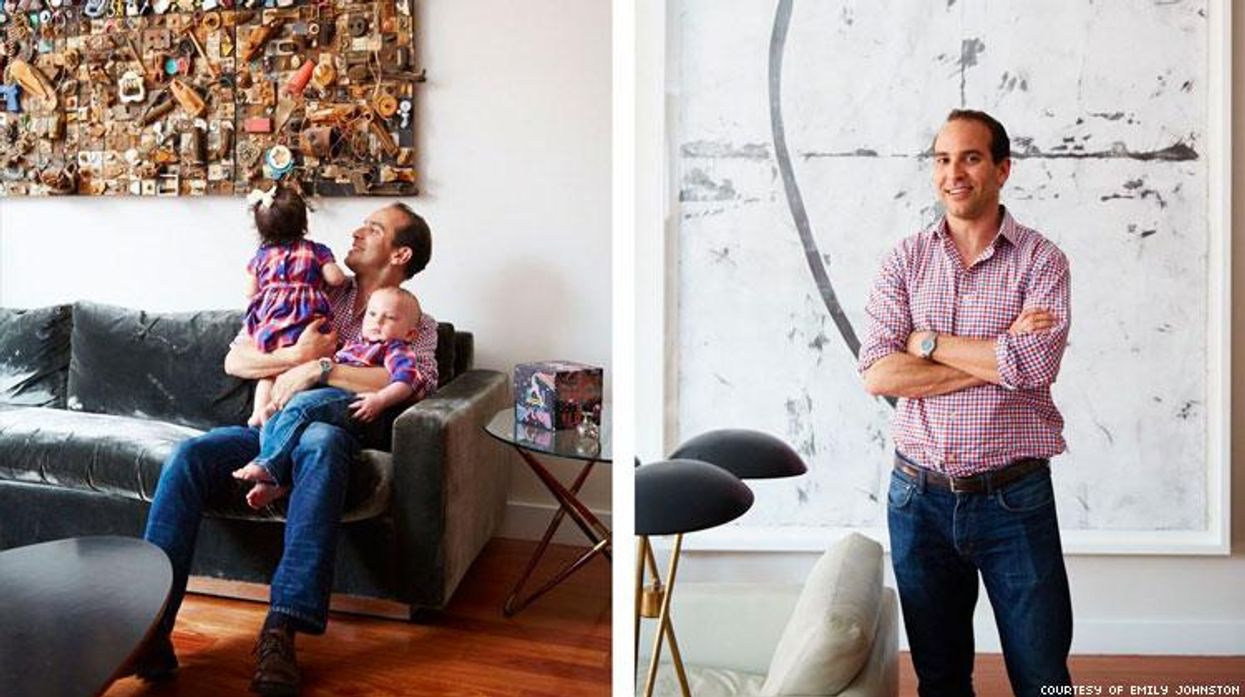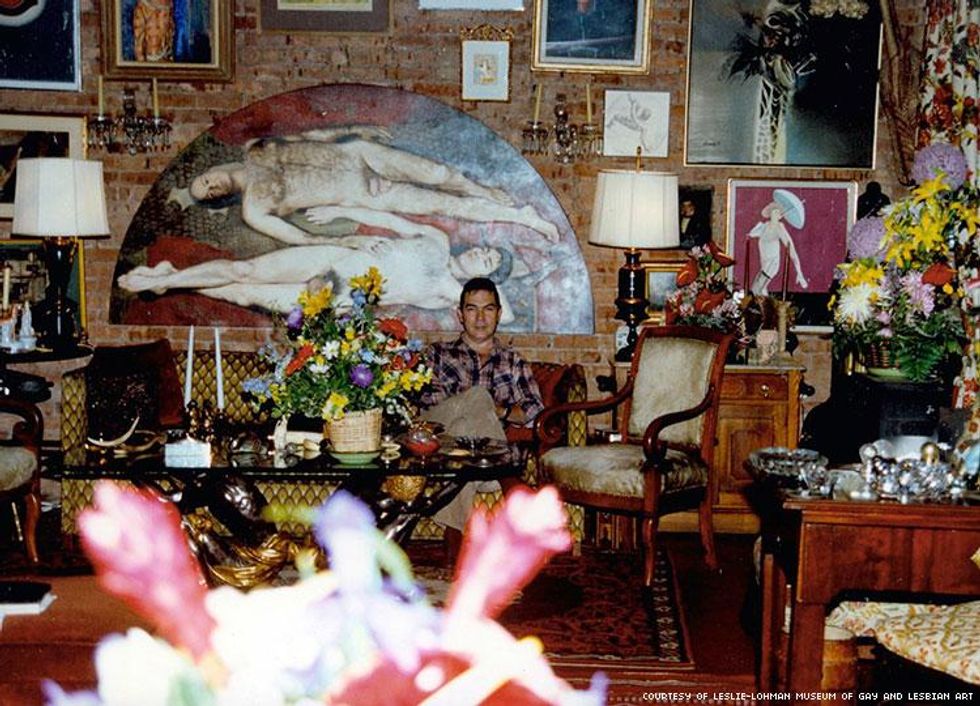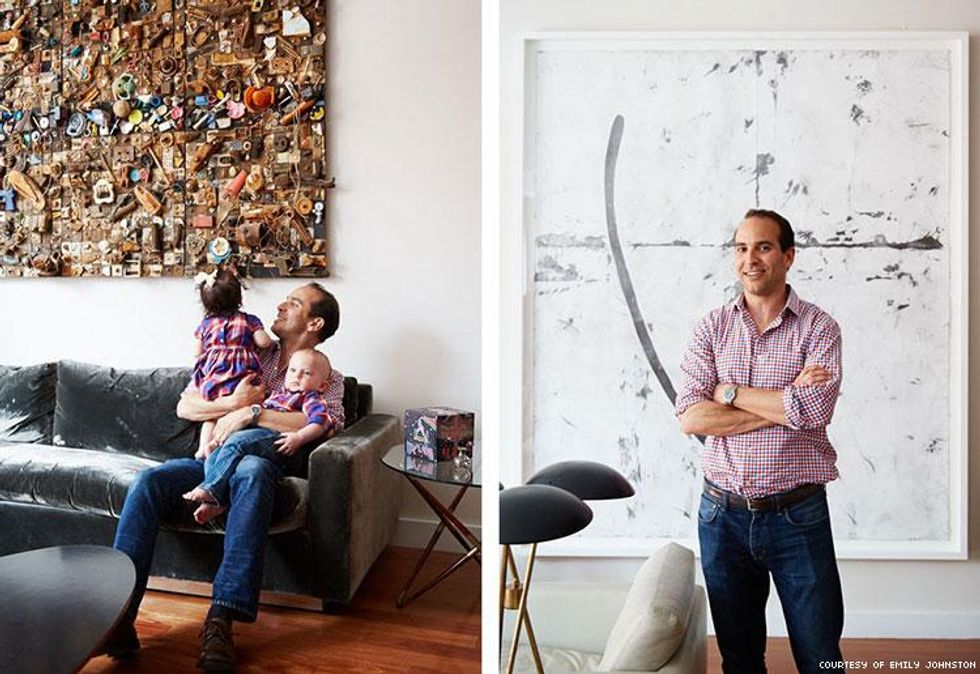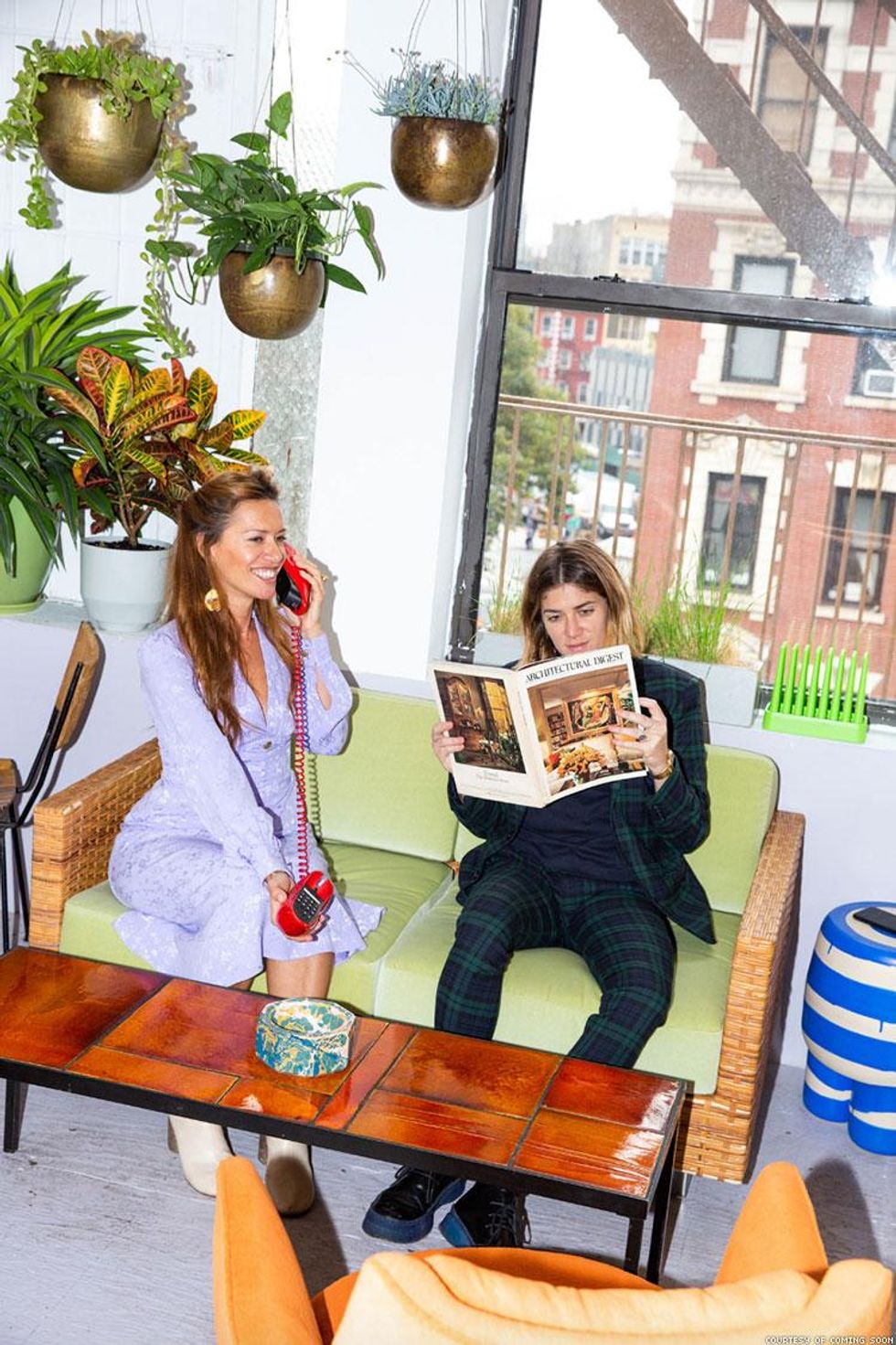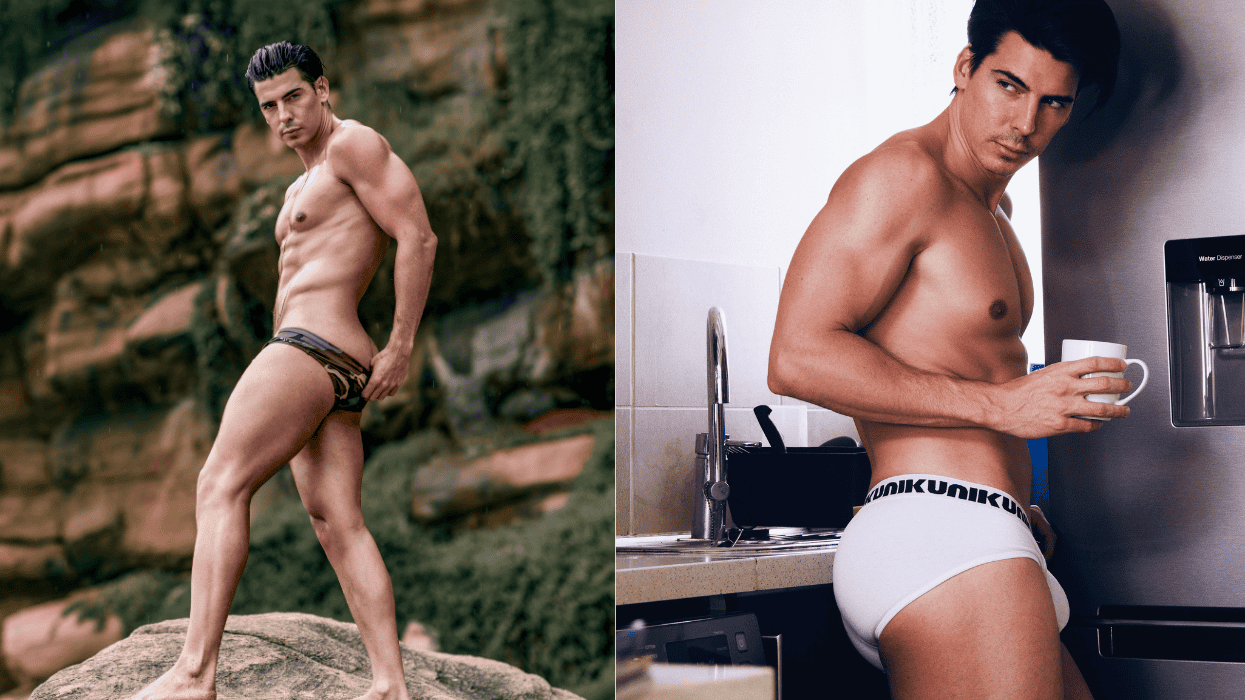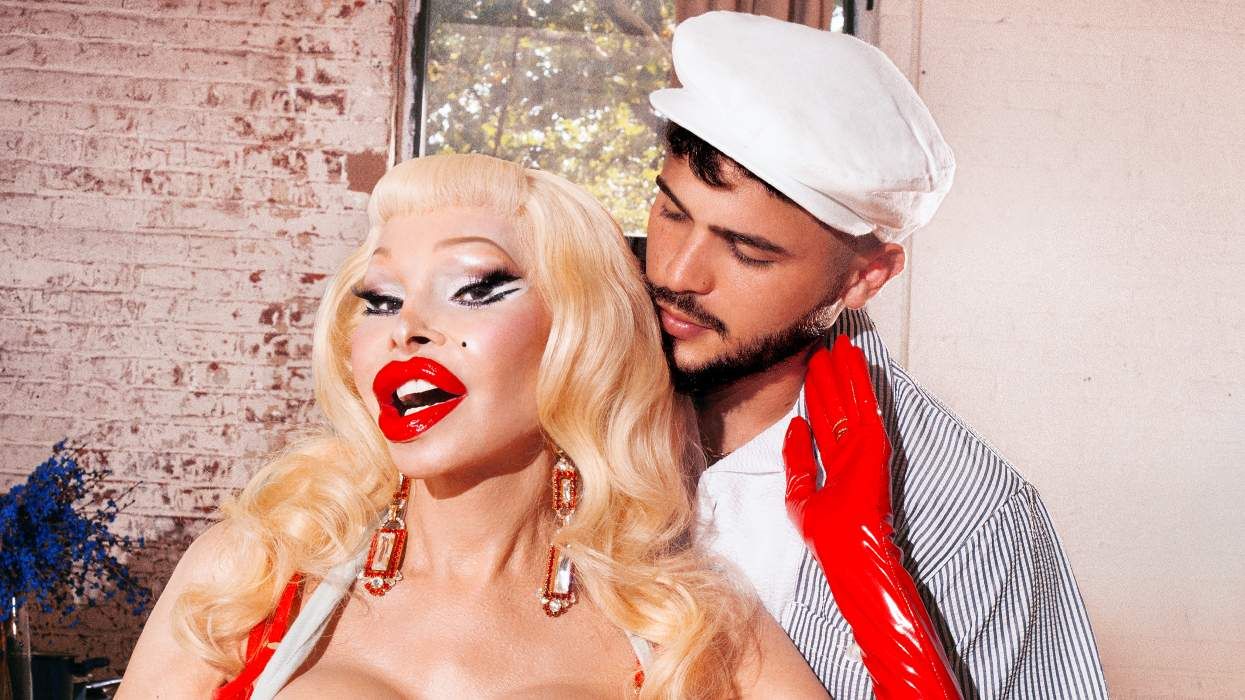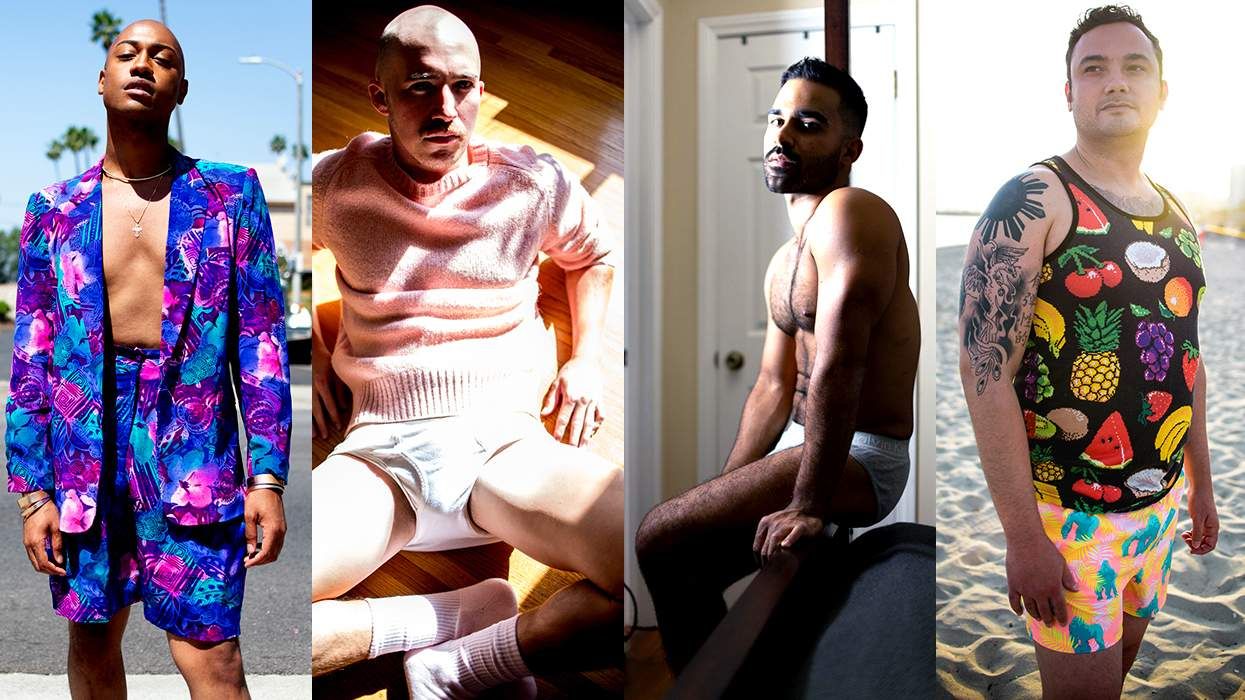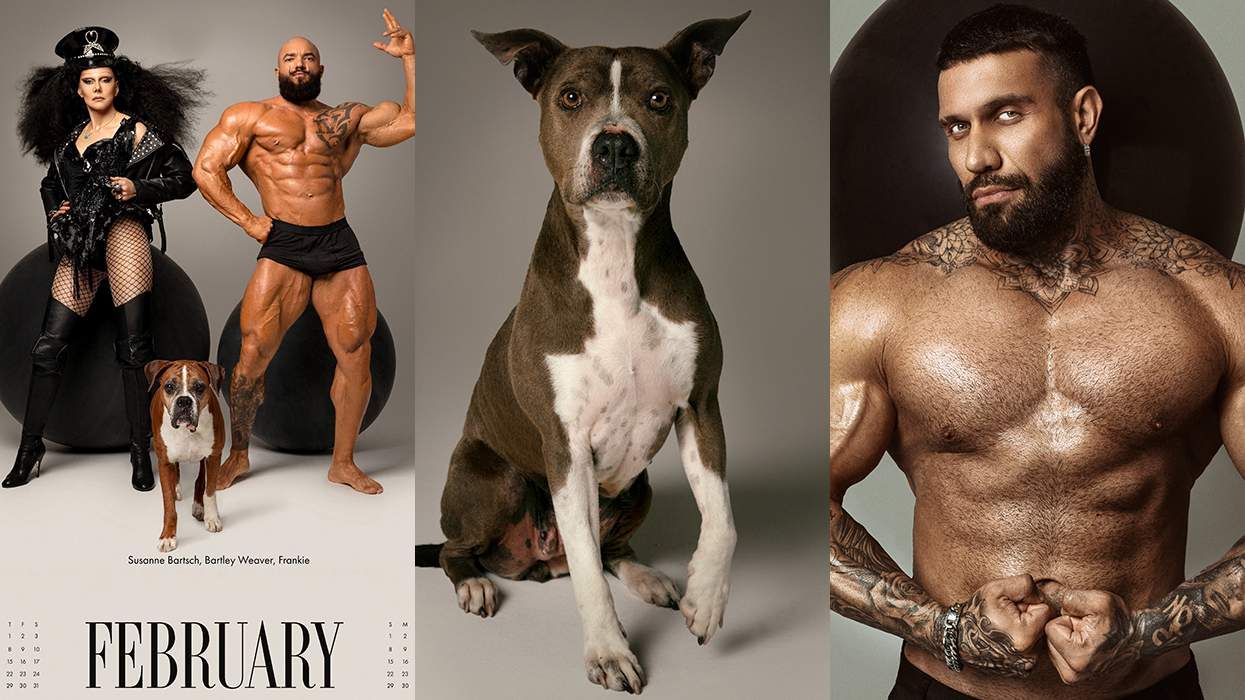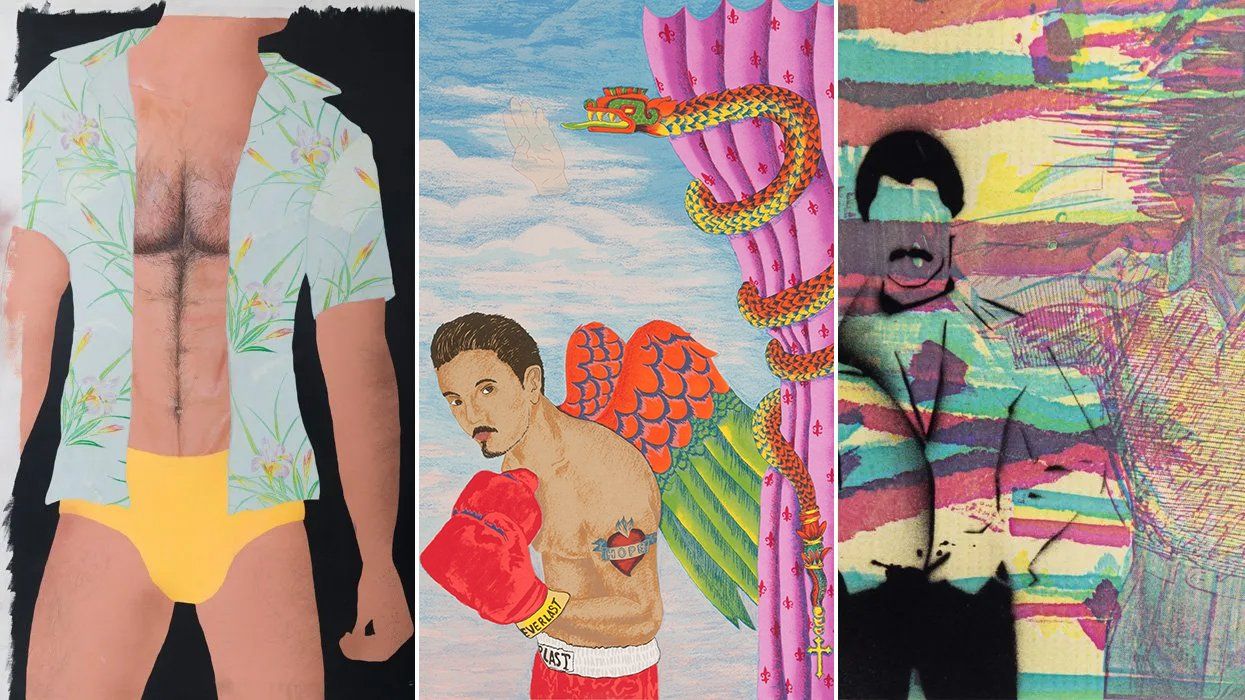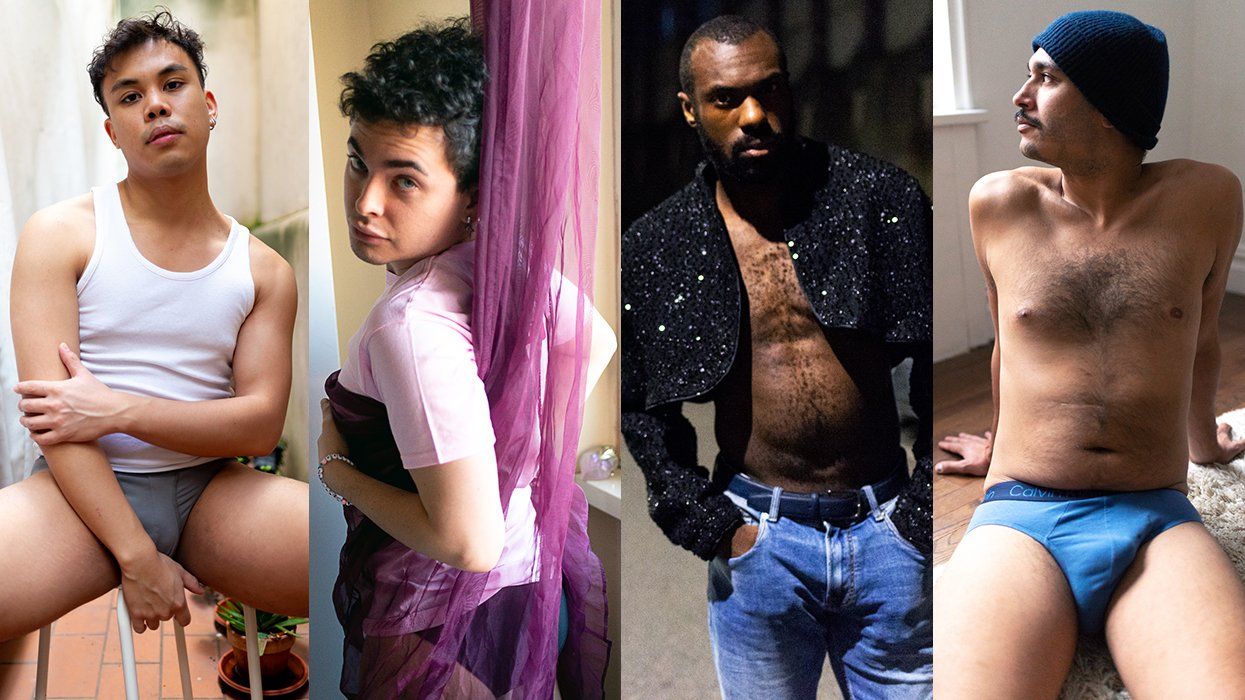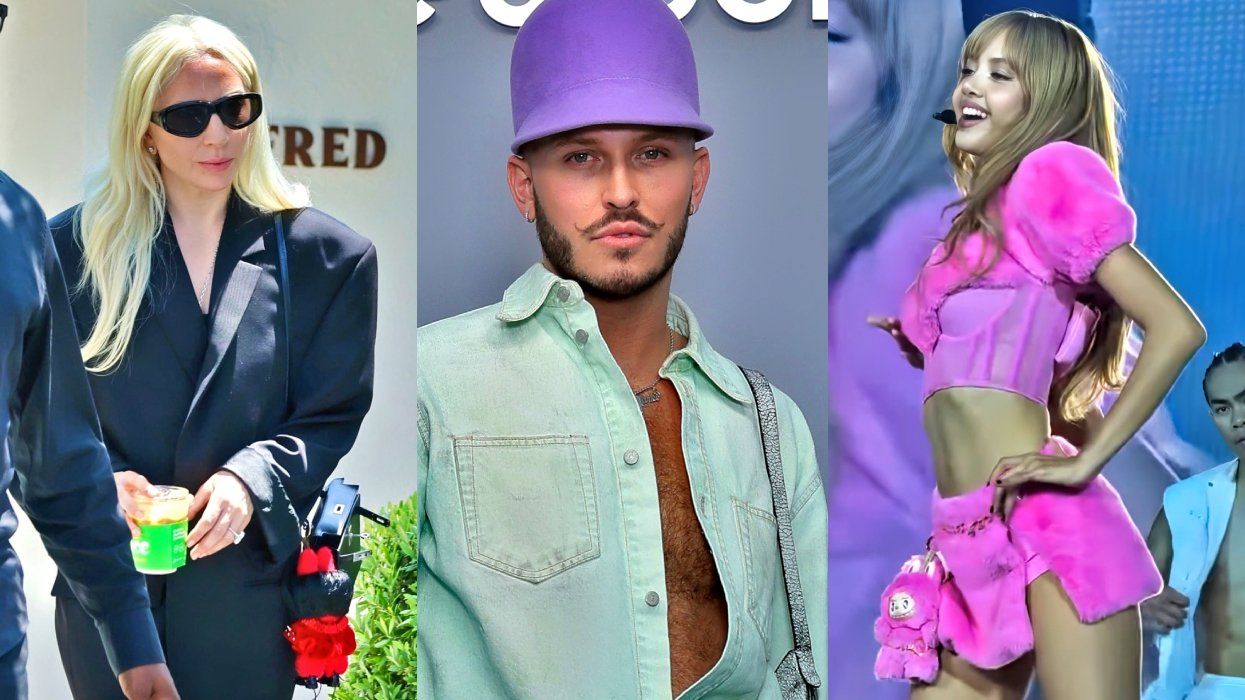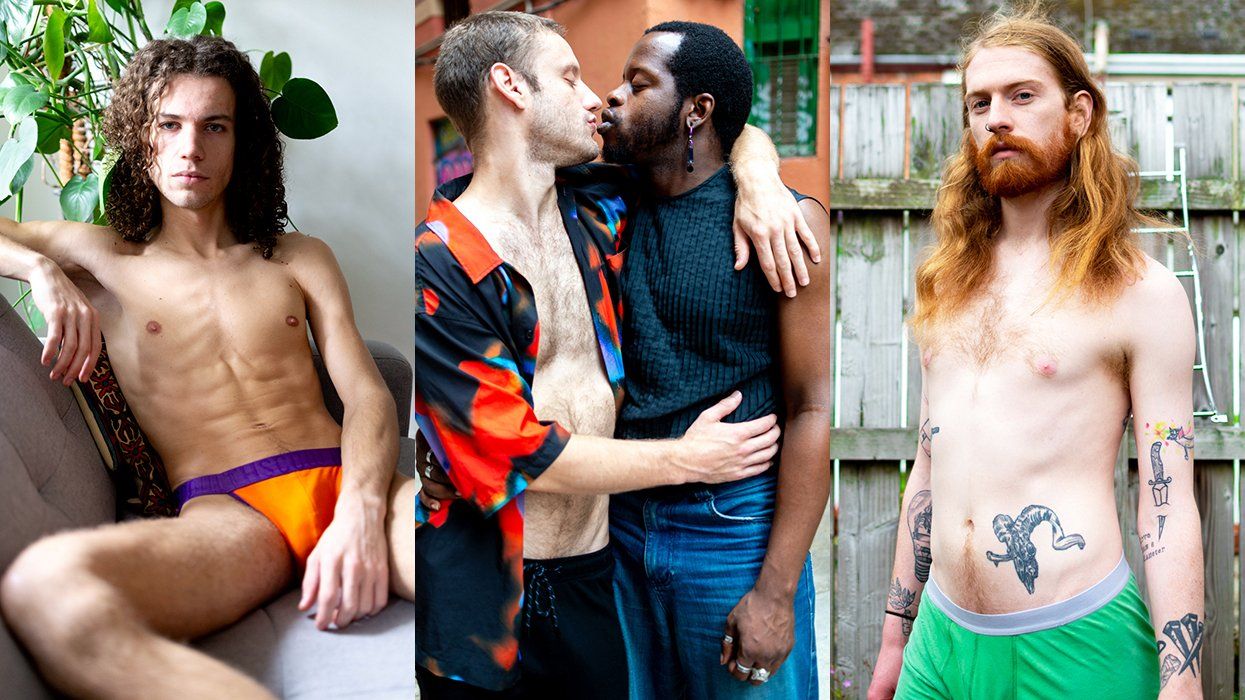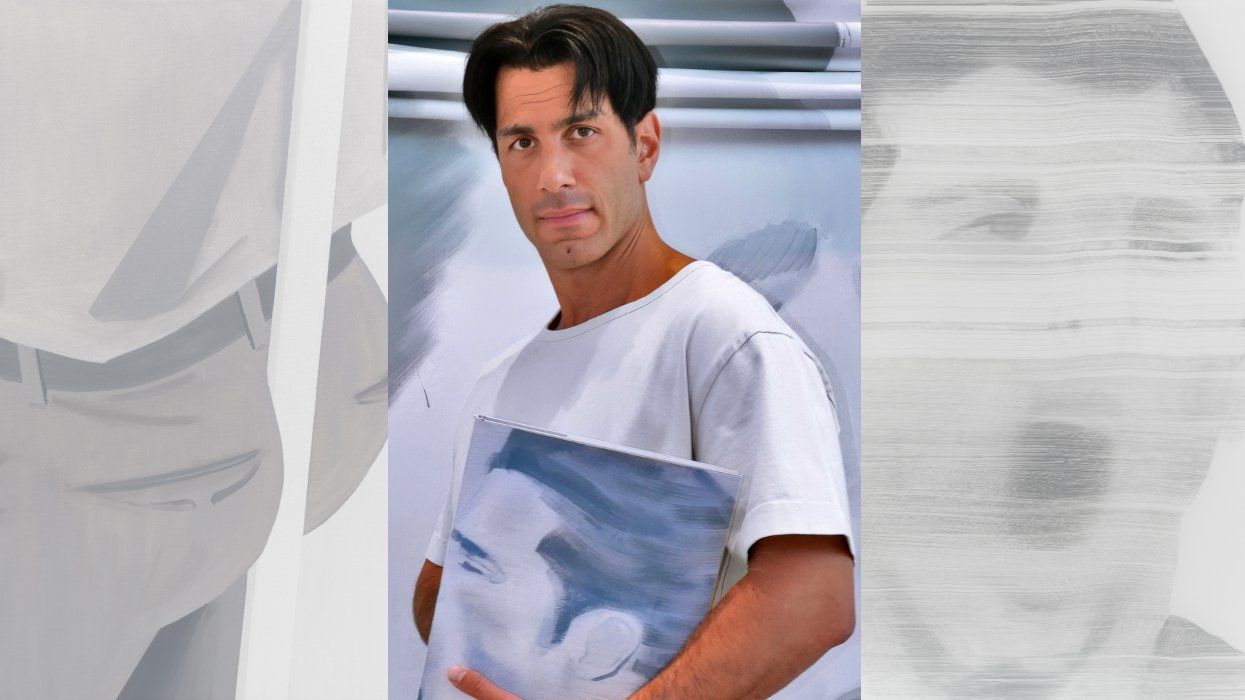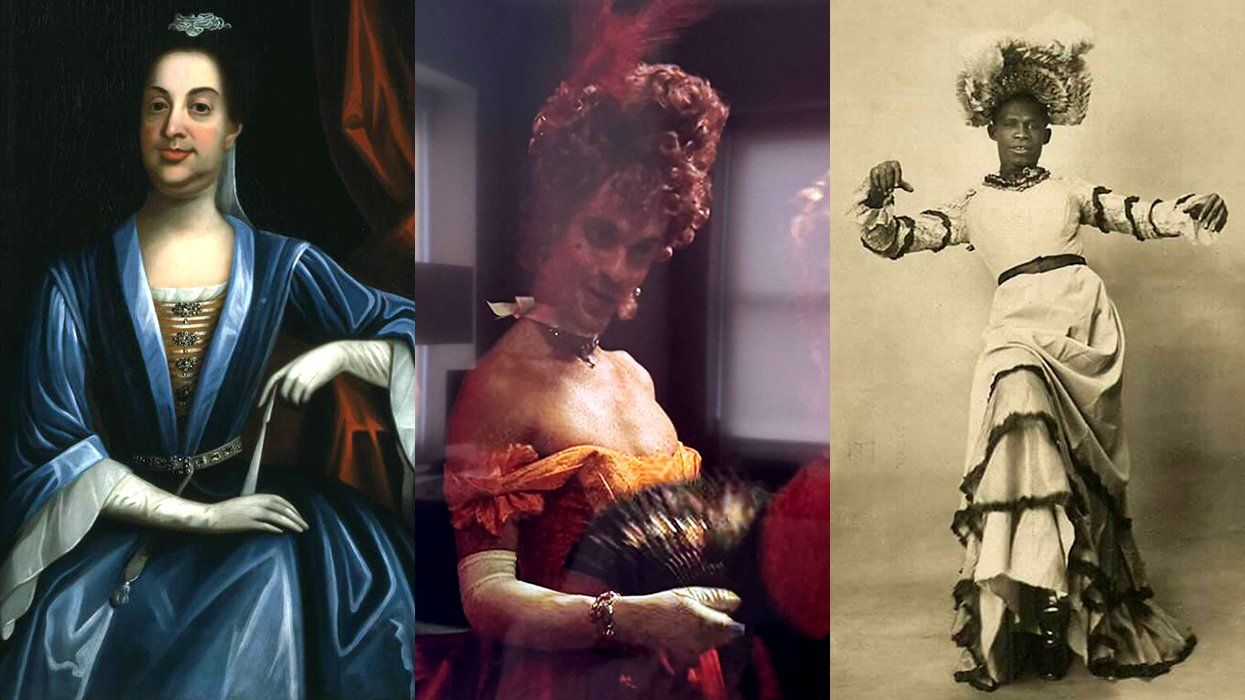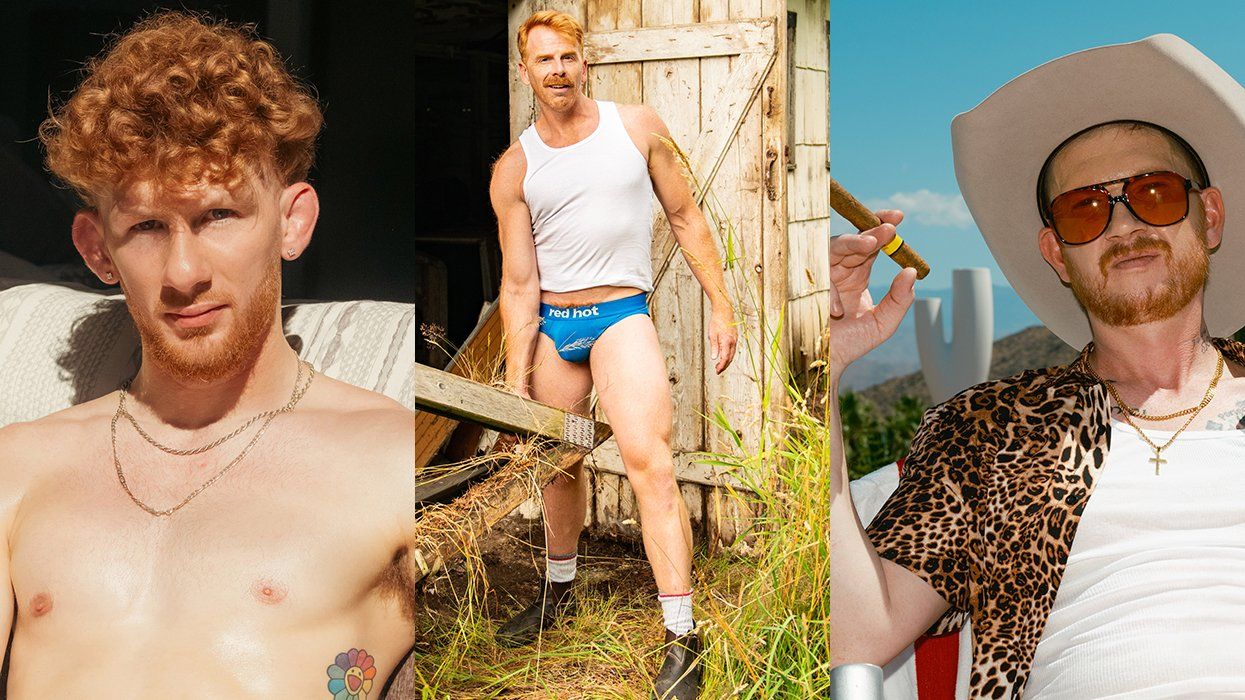"As you see, I have a lot of phalli lying around," quips Charles Leslie, who co-founded the Leslie-Lohman Museum of Gay and Lesbian Art in New York with his late partner J. Frederic "Fritz" Lohman.
Leslie sits, legs crossed, on a couch in the museum's foyer, where a recreation of his 1,800-square-foot SoHo loft, just around the corner, has been staged as an exhibition titled "Male Gaze: Life, Legacy, Legend." He motions toward a glass case filled with crystal and ceramic penises, scrimshawed whale-bone dildos -- the various explicitly pointed objects for which his apartment, where homoerotic art in all styles and media cover every surface, has been lovingly dubbed the "Phallus Palace." One painting by the artist Marion Pinto, a dual nude of Leslie and Lohman lying side by side, hangs above the couch in a half-circle, and it particularly beguiles. "It was 1972," says Leslie, now 85. "Our hearts were young and gay."
As an aspiring collector following in Leslie's footsteps, the question of where to begin buying is a matter of intention. Is my mission, like Leslie's, to preserve a generation of queer creative expression? It need not be so grand -- but what, besides gathering beautiful objects, is the end goal of my purchase? And how can it best serve the LGBTQ+ creative community at large? According to these industry insiders, here's how.
Make it a mission.
When the Leslie-Lohman Art Foundation was granted nonprofit status, it was the height of the AIDS epidemic. When many LGBTQ+ artists and collectors were struck by illness, Leslie's mission expanded from providing support and visibility for queer artists to one of preservation: "to save collections that were endangered by church, state, and straight." He says, "We have approximately 30,000 pieces, the majority of which would have been consigned to a dumpster had we not acquired them through donation or direct purchase." Thanks to Leslie's mission-driven collecting, 50 years of queer art were saved, including works by Keith Haring, Andy Warhol, and Robert Mapplethorpe.
Come together.
For Bernard Lumpkin, an established collector of Black American art who sits on the board of the Studio Museum in Harlem and education committees at the Whitney Museum of American Art, it's about building community. "Art collecting is a very communal, collaborative endeavor," he says, referring to the network of curators, collectors, and artists he's convened as stand-ins for traditional art advisers. His collection includes works by Kerry James Marshall, Deana Lawson, and Henry Taylor, as well as a number of LGBTQ+ artists including Jonathan Lyndon Chase, Jennifer Packer, Eric Mack, Sable Smith, and Troy Michie. "It's really important, if you want to support queer artists, that you're building a community that understands the issues you are talking about in the work and the unique challenges queer artists face."
Start online.
When seeking out LGBTQ+ artists, digital platforms like Artsy and Artspace are great places to begin researching and connecting with relevant galleries, as well as Exhibition A, a publisher that collaborates with artists to create more affordable editions. Lumpkin, however, cautions first-time buyers from purchasing artwork online, in part because it is easy to be misinformed or misled. You lose out on an important experience. "You cannot measure texture, scale, or the way the light hits the painting from a picture," he says, likening it to dating online or test-driving a car.
Trust the experts.
Rather, Lumpkin suggests following the curators and galleries that champion queer artists. Lumpkin names Jasmin Tsou, proprietress of JTT Gallery; David Fierman of Fierman; Eric Booker at the Studio Museum in Harlem; and Sophie Morner, owner of Company and Baby Company, who represents four queer artists included in the 2019 Whitney Biennial. In the nonprofit sector, he suggests keeping up with Queer|Art, a mentorship organization that pairs younger artists with more established ones, and, of course, the Leslie-Lohman Museum.
Patronize!
"Become a member there. See their shows. Talk to their curators," Lumpkin continues. "Buying works of art is really just the price of admission to a global community and a global conversation. If your collection focuses on marginalized voices, then it becomes a think space, a gathering point, a call for activism. It gathers voices. You can create spaces where people feel recognized and where stories get told that otherwise aren't heard."
Budget, budget, budget.
"You can collect art on a budget of $500 a year -- or $500,000 a year," says Lumpkin. "I say that word because, look, it is an expense. Having a budget also helps you make decisions. It actually makes you a smarter collector because you realize, 'I have these five things on my list, I can only afford three of them this year -- what are those three things going to be?' It really makes you think carefully about the choices you are making and prioritize them."
Buy what you love.
There is a difference between collecting art and accumulating it. "There are people who buy art, just like there are people who buy stocks or real estate," Lumpkin says. "Then, there are people who collect art, which is a much more engaged and meaningful endeavor, where you really are doing it to support to the artist. Don't buy with your ears, buy with your eyes."
Remember that art doesn't just hang in museums.
Helena Barquet and Fabiana Faria, owners of the Lower East Side design and home accessories boutique Coming Soon, which opened in 2013, believe that concept stores like their own can create accessible, non-threatening spaces to introduce viewers to emerging artists as an alternative to the traditional gallery framework. "It's interesting because we work with a lot of designers and artists that may be suitable for a gallery but who have opened up themselves to being in a retail setting with us," says Faria, who notes that the key difference between art and design is a question of function. That is why, in addition to slinging on-trend housewares crafted by small producers -- one-off ceramic milking stools, concrete-poured lazy susans, Miro-esque wool-tufted rugs -- Coming Soon features rotating programming and site-specific installations. "Why wouldn't you want to buy a print here along with your chair and your bowl and your glasses?"
This article appears in Out's May issue featuring artist Zanele Muholi and model Ruth Bell as cover stars. The issue is guest edited by Kimberly Drew. To read more, grab your own copy of the issue on Kindle, Nook, Zinio or (newly) Apple News+ today. Preview more of the issue here and click here to subscribe.


